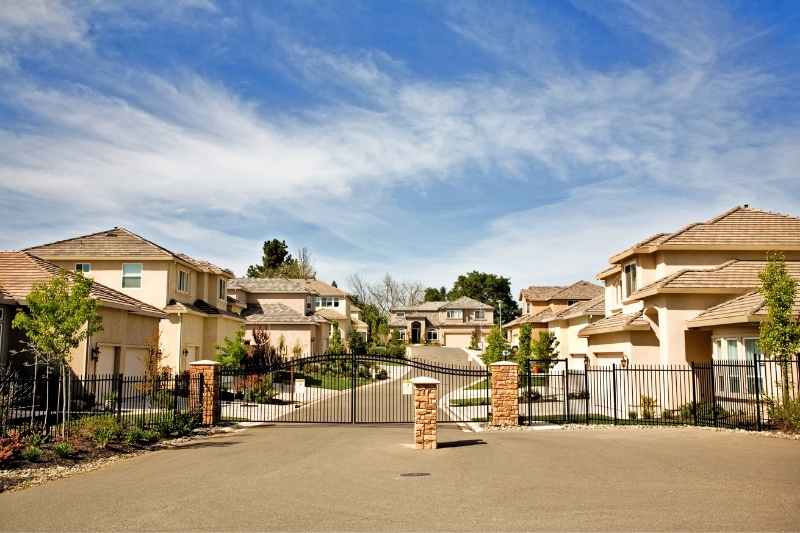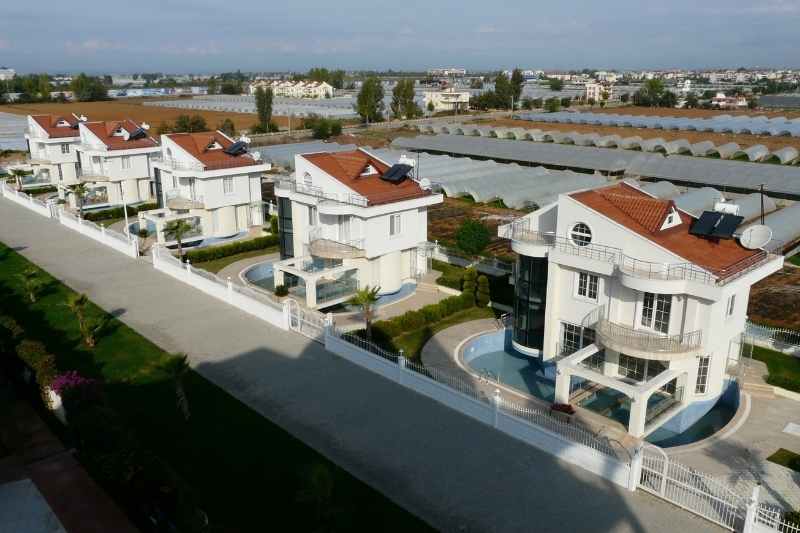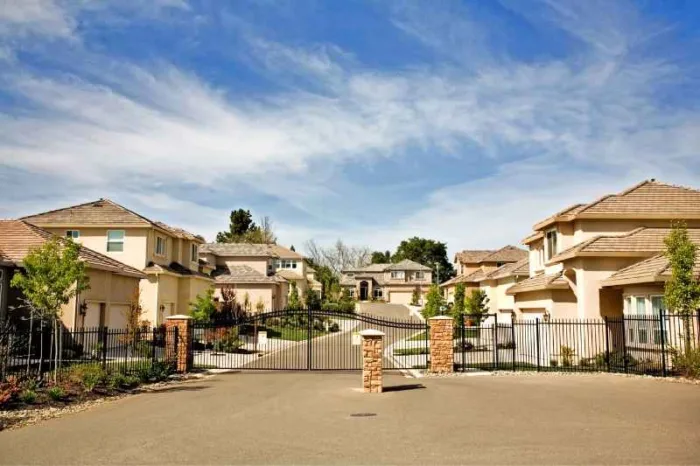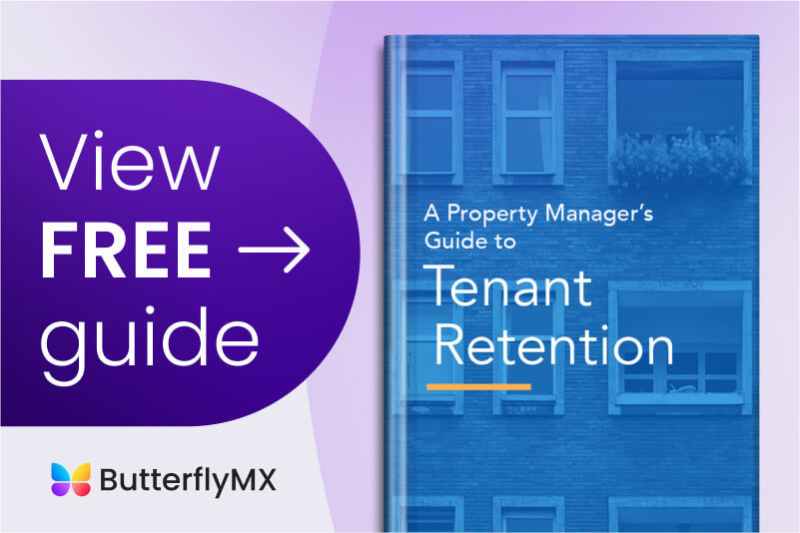
As a real estate professional, you’re always on the lookout for the latest industry trends. And one up-and-coming trend is horizontal multifamily housing, which is gaining popularity in the suburbs and outskirts of major cities. It’s essential to stay informed about this emerging trend. This way, you can adopt new ways to retain residents, spruce up your business model, and be ahead of the competition.
Horizontal multifamily buildings offer residents the privacy of single-family homes while still reaping the benefits of multifamily amenities and on-site property management. Read on to learn more about the horizontal multifamily housing trend, its origins and benefits, and how it affects the overall industry.
In this post, we discuss:
- What is horizontal multifamily?
- Origins of this trend
- Benefits of investing in horizontal multifamily housing
- How horizontal living affects the multifamily industry
What is horizontal multifamily?
Horizontal multifamily refers to single-family rental housing units built on small lots of land with high-end amenities and on-site property management staff. Unlike traditional multifamily buildings, the apartments are standalone buildings, without other units above or below. In some horizontal multifamily communities, residents share walls with their neighbors. While in other communities, each unit is entirely separate. In general, horizontal multifamily communities have 100 or more single-family housing units.
What residents love about horizontal multifamily communities is that they have private, intimate homes with access to more space and often their own backyards. Best of all? Residents don’t need to deal with the maintenance and repairs tied to owning a home. This living arrangement accommodates those who crave a solution that’s in between apartment living and homeownership.

Similar to vertical multifamily communities, residents in horizontal multifamily developments enjoy:
- Shared amenity spaces
- Planned resident events
- On-site property maintenance services
In short, horizontal living combines the best elements of private single-family houses and luxury multifamily apartments. Residents live in a home without the hassles associated with buying or owning.
Watch how ButterflyMX works:
Build-to-rent developments
Horizontal multifamily properties are also known as build-to-rent since they’re purpose-built housing explicitly designed for rent rather than for sale. As homeownership continues to decline, real estate developers see more profitability and demand for build-to-rent single-family developments than houses built for sale.
According to The New York Times, the number of built-to-rent homes increased 30% from 2019 to 2020. Currently, they account for about 6% of all new houses built in the United States and are projected to double in the next decade or so.
Traditionally, single-family rental homes involved an investor purchasing an existing house from a homeowner, and then it being rented out to residents. But in the current market, single-family rental homes are being built from the ground up for the sole purpose of being rented. This also means that developers are using construction materials and appliances that are durable enough to last through multiple lease renewal cycles.
Origins of this trend
Although the global pandemic accelerated the adoption of the horizontal multifamily housing trend, it has been on the rise for over a dozen years. The build-to-rent business model stretches back to the 1980s, but it became what it is today after the Great Recession of 2008.
Soon after the financial crisis, homeownership rates plummeted and never made a full recovery. And as millennials entered the workforce with mountains of student loan debt, they were further deterred from the housing market. Coupled with their choice to rent instead of buy, millennials’ market behaviors drove homebuilding titans to pivot towards single-family build-to-rent development projects.
Then, in 2020, thousands of city-dwellers traded their high-rise apartments for suburban houses with lots of outdoor space. As a result, the demand for horizontal living communities grew exponentially. Amid the large-scale shift to working from home, residents reevaluated their needs and desires for living spaces.
Hassle-free single-family homes with multifamily amenities
In general, the multifamily landscape is changing rapidly. Renters are now looking for larger spaces and easy access to the outdoors. While many still want the flexibility and convenience that renting provides, they don’t want to be tied down to a house with a laundry list of maintenance and repair requirements. And that’s where horizontal multifamily communities fit the bill.
Real estate analysts say that build-to-rent communities are one of the fastest-growing trends in the multifamily sector today. Residents of horizontal multifamily communities enjoy hassle-free, single-family living with access to luxurious amenities found in upscale apartments.
Benefits of investing in horizontal multifamily housing
Investing in horizontal multifamily projects is a great way to diversify your multifamily real estate portfolio. Currently, built-to-rent developments are the most popular in Phoenix, Arizona, Houston, Texas, and other metropolitan areas in the south and southwest regions. And as renters are continuously moving to less dense environments and aren’t looking to buy a home, demand for horizontal multifamily homes will continue to grow.

Here are the top three benefits of investing in horizontal multifamily housing:
- High return on investment. Horizontal multifamily communities have lower construction costs than traditional single-family homes and have greater occupancy rates. So, you’ll likely see a faster and higher return on investment.
- Offer renters the best of both worlds. Whether it’s a young family not ready to buy a house or an older couple downsizing and simplifying their lifestyle, horizontal multifamily homes appeal to many different demographics. It offers renters the best of both worlds: privacy and ample space with access to apartment-style amenities and professional property maintenance.
- Lower turnover rates than vertical multifamily properties. Horizontal multifamily housing appeals to a specific niche in the rental pool. Overall, horizontal multifamily renters are looking for a long-term home for their growing family or for their retirement plans. As a result, you can expect renters to sign longer, multi-year leases, which reduces turnover costs.
How horizontal living affects the multifamily industry
Those already in the vertical multifamily industry shouldn’t see this as a threat. Instead, horizontal multifamily is an alternative that provides a housing solution for renters with a specific set of needs. But the rise of horizontal living solutions has major implications for the industry overall.
Here’s how horizontal multifamily is influencing the industry:
- Proptech is the expectation, not an exception. The vast majority of new built-to-rent developments come equipped with proptech solutions. Modern residents crave these tech-powered systems, from smart thermostats to smartphone-based access controls.
- Outdoor amenities are a must. The biggest driver that’s bringing renters to horizontal multifamily homes is their easy access to outdoor spaces, especially during the summer months. As such, finding the right outdoor amenities for your property is essential to attracting prospective renters to any kind of living solution.
- Smart property management is key. One thing is clear: Residents of all kinds want hassle-free access to professional property management. So, you should consider implementing building automation software and technology wherever possible. For example, use property management software that allows residents to submit maintenance requests and amenity reservations easily. And your staff should be able to seamlessly manage and track the progress of each request.

Takeaways
Horizontal multifamily developments have the potential to grow the overall multifamily industry exponentially. This is an exciting opportunity for the multifamily sector of the real estate industry to enter new markets and expand its horizons.
Similar to most new trends, technology is the major determinant of its success and the trajectory of horizontal multifamily developments. So, it’s important to be ahead of the game and equip your property with proptech solutions that’ll help increase resident satisfaction as well as retain property management staff members.







